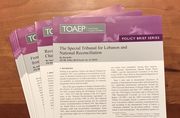Table of contents:
Element:
In Tadić The Appeals Chamber stated:
"[T]he only possible inference to be drawn is that the Appellant had the intention to further the criminal purpose [...]. That non-Serbs might be killed in the effecting of this common aim was, in the circumstances of the present case, foreseeable. The Appellant was aware that the actions of the group of which he was a member were likely to lead to such killings, but he nevertheless willingly took that risk."[1]
The Trial Chamber in the Stakić Case stated that:
"Turning to the mens rea element of the crime, the Trial Chamber finds that both a dolus directus and a dolus eventualis are sufficient to establish the crime of murder under Article 3. In French and German law, the standard form of criminal homicide (meurtre, Totschlag) is defined simply as intentionally killing another human being. German law takes dolus eventualis as sufficient to constitute intentional killing. The technical definition of dolus eventualis is the following: if the actor engages in life-endangering behaviour, his killing becomes intentional if he "reconciles himself" or "makes peace" with the likelihood of death. Thus, if the killing I committed with "manifest indifference to the value of human life", even conduct of minimal risk can qualify as intentional homicide. Large scale killings that would be classified as reckless murder in the United States would meet the continental criteria of dolus eventualis. The Trial Chamber emphasises that the concept of dolus eventualis does not include a standard of negligence or gross negligence." "[2]
According to the Mucić et al. ("Čelebići") Trial Chamber:
"While different legal systems utilise differing forms of classification of the mental element involved in the crime of murder, it is clear that some form of intention is required. However, this intention may be inferred from the circumstances, whether one approaches the issue from the perspective of the foreseeability of death as a consequence of the acts of the accused, or the taking of an excessive risk which demonstrates recklessness. As has been stated by the Prosecution, the Commentary to the Additional Protocols expressly includes the concept of "recklessness" within its discussion of the meaning of "wilful" as a qualifying term in both articles 11 and 85 of Additional Protocol I."[3]
Footnotes:
[1] ICTY, Tadić, Appeal Judgment, 15 July 1999, para. 232.
[2] ICTY, Stakić Trial Judgment, 13 July 2003, para. 587.
[3] ICTY, Mucić et al. ("Čelebići") Trial Judgment, 16 November 1998, para. 437; Cf. also Blaškić Trial Judgment, para. 153.







